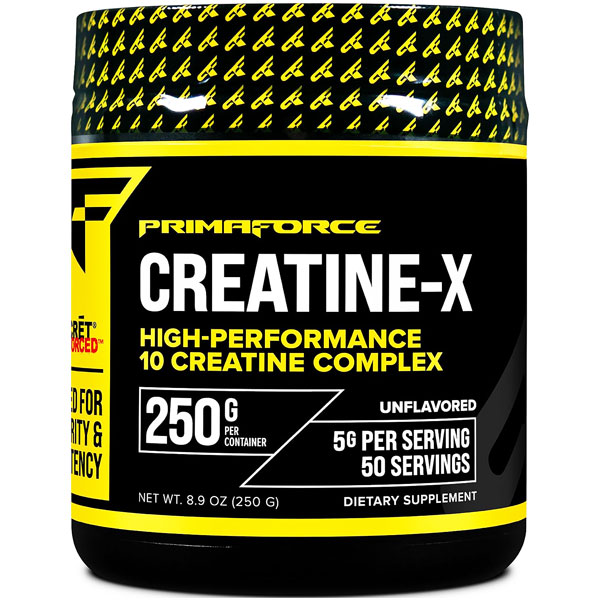
Top Sellers
Top 50 Best Newest Supplements Top Protein Top Pre-Workout Top Post-Workout Top Fat Loss Top Intra-Workout Top Health & Wellness Powerlifting Books
Workout Accessories
Videos
Workout Music
Powerlifting Books
Workout Accessories
Videos
Workout Music
Ads





 By: MuscleSports.net
By: MuscleSports.net
We all know that at one time or another during an athlete’s competitive career ailments and injuries are obstacles which force progressive systems of training to have to be altered. It is up to the coach and or trainer to devise means of training which are effective in avoiding these ill-stricken periods. Weight training can be such a means as this very beneficial practice develops muscle, tendon and ligament strength and when practiced correctly, develops structural (body) balance. In this article we wish to relate to a few cases which are present within many weight training environment. These examples are of athletes who have weight trained on their own without any supervision and have obtained obstacles in their training which directly relate to body imbalances.
The first example is young lady we were training who is cyclist. Her complaint is knee pain, anterior cruciate ligament. By reviewing this athletes strengths and weaknesses, we immediately diagnosed a quadriceps-hamstring imbalance. Her cycling has developed her frontal leg tissues (quadriceps) to the point where a constant forward-upward stress is placed upon the anterior patellar tissues. To correct this imbalance, we’ve included leg curls and other hamstring exercises into her training (including isometrics). This approach is very simple as the hamstrings need to strengthen to develop in proportion to the quadriceps to create proper knee balance.
Another case is a combination of a number of athletes. Many football players and wrestlers complain to us about shoulder pains. Upon reviewing their past training, these athletes have expended a great deal of their energies performing bench presses, incline presses and military presses which are all anterior deltoid exercises. A very similar imbalance has occurred in these cases, as compared to the above example, but this time to the shoulder joint. The deltoid is out of balance, anterior to posterior, and (in many) the chest is out of proportion to the upper back. With the inclusion of exercises which effect the posterior deltoid, latissimus dorsi and the trapezius, balance is accomplished and the ailments eventually subside. All this can be done without the exclusion of the above mentioned exercises.
Our last case refers to everyone who has a weak or fat waist and does hundreds and hundreds of sit ups to taper the midsection. What this does is create an imbalance to the lower back as the posterior abdominal muscles and the anterior lumbar tissues put an anterior strain on the lower vertebrae. A problem like this can be corrected by performing back hyper-extensions, stiff-leg deadlifts, etc. which will strengthen and stabilize this joint.
The problems experienced by the above examples are all correctable. However, patience is necessary as many of the exercises, which need to be practiced to obtain proper body balance, are often difficult to perform and require lighter resistances (as compared to the resistances handled in exercises which stress the dominating muscles). Many athletes shy away from hard-to-perform exercises due to the fact that these movements may be uncomfortable. Also, many athletes feel that it is fully necessary to lift heavy weights to produce any benefit. This is not true as, at first, the weaker muscles will have to endure lighter resistances but after a period of proper training, these muscles will strengthen to respectable levels.
When comprising a weight training program for an athlete, it is best to include all that is required into their training. Review the athlete’s interests and goals (sports they wish to participate in) and keep in mind their sport’s most popular ailments. For instance: football has the knees, tennis has the elbows, wrestlers have the shoulders, runners have the shins, etc. If programs are designed to prevent common ailments and injuries, development will be greater and levels of strength will be maintained for longer periods of time.
No matter what the age or stage of athletic development each weight training athlete must train for muscular balance. This will, ensure strong joint stability. With this philosophy in mind, we can construct weight training programs for athletes which fall under the so-called “Push-Pull” methods. These methods are very simple and very effective. Agonistic and antagonistic muscle groups are stressed working the muscles from both the concentric and eccentric directions. This strengthens the muscles around each bone and joint Instead of the above examples where development was one-sided. Some examples and “rules-of-thumb” for the “Push-Pull” philosophy:
The Bench Press is a “Push” exercise where a barbell is pushed up off of the chest away from the body. To strengthen the stabilizing muscles and to develop muscular balance to the upper body, an exercise like Bent-Over Rows may be included some time during the weekly training cycle. This exercise (Bent-Over Row) Is a “Pull” exercise as a resistance Is taken from arms’ length and pulled towards the body, just the exact opposite action of the Bench Press.
The Military Press is another “Push” exercise as a barbell is taken at the shoulders and pushed upwards to arms’ length. To antagonize this action, exercises like Pull-Ups, Lat Pulldowns, etc. may act as the “Pull” movements. Many athletes perform a number of exercises which stress frontal leg muscles; such as Back Squats, Leg Presses, Leg Extensions, etc. To antagonize the knee joint and make way for the development of leg balance, Leg Curls, Back Leg Raises and other posterior leg exercises should be practiced.
Always make sure that the athlete has an exercise included into his or her training which acts as an apposite or antagonist to other practicing exercises. This is simple for the coach, a bit rougher for the athlete, but both will attain rewarding benefits.
If the athlete is very new to weight training, psychological and neuromuscular patterns will develop in a most efficient way. If the athlete has been training for same time, these patterns are pretty much set in their own ways and changes in training may become difficult. The athlete must be advised to train for total body balance. His or her time and energies will have to spread more evenly throughout their weight training periods developing weaker and out-of-balance muscles while maintaining the strength levels In the dominant areas.
To conclude, we would like to state that too many athletes lack versatility in their weight training, especially in their early years. There are literally hundreds of exercises to be performed. To rely on just one or a select few for total development is insufficient. Training only your strong points is a weakness. Make your athletes more versatile by giving them more challenges within your weight training facility. Even though this artIcle relates to a method of training which will eliminate unnecessary ailments and injuries, let’s not limit its contents to just that. Training for body balance will enhance all areas of athletic development.
Tags: Strength Life Conditioning Core

Thank You...

Send Us Your Comments:
Balanced Training and Injury Prevention - Comments
Sponsored Products:

MuscleTech
NitroTech
Advanced Musclebuilding Protein!

ANIMAL
TEST
PRO-ANDROGEN!

JACKED FACTORY
NITROSURGE
HardCore Pre-Workout

PRIMAFORCE
Creatine-X
10 Creatine Complex
Comments: